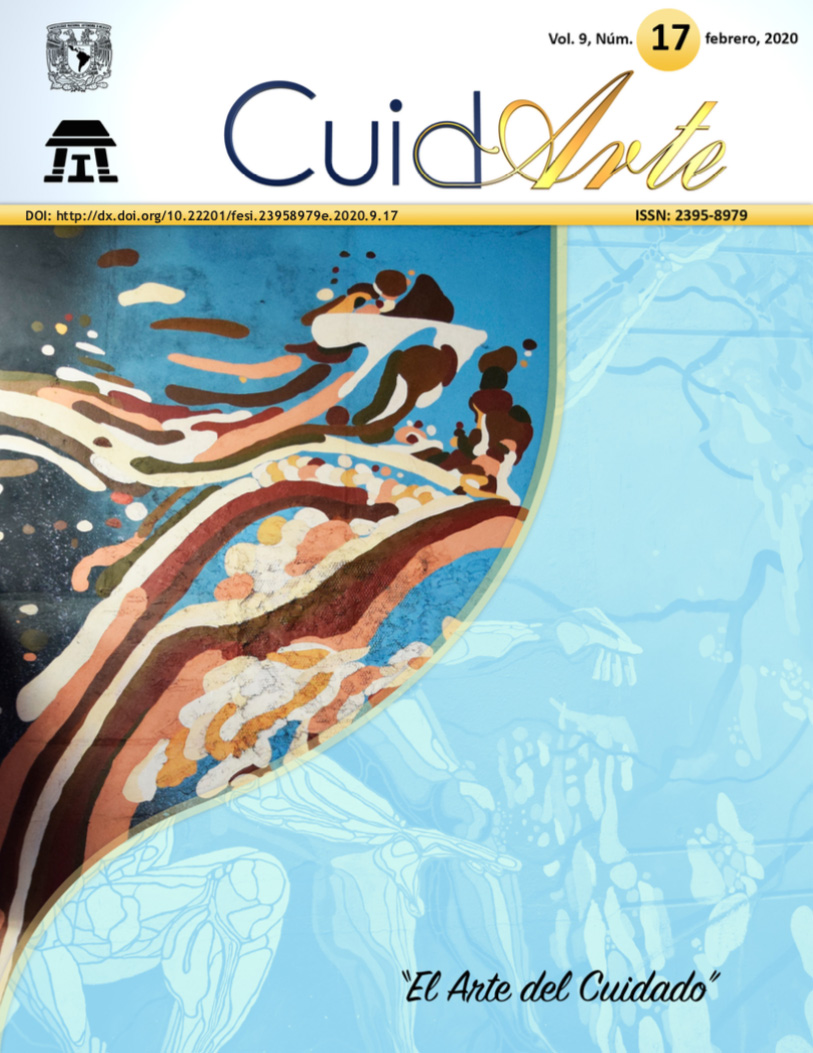The bifocal clinical practice model applied to patients with hemodynamic alteration
Main Article Content
Abstract
Downloads
Article Details
Citas en Dimensions Service
References
(1) Romero J. Escala de Posicionamiento ante el Diagnóstico Enfermero: Adaptación transcultural, desarrollo de una forma abreviada evaluación psicométrica. [Tesis doctoral]. Cádiz: Universidad de Cádiz, Programa de Doctorado en Ciencias de la Salud; 2014. [Consultado 20 diciembre 2018]. Disponible en: http://bit.ly/2H8iCKj
(2) Carpenito L. Planes de enfermería y documentación: Diagnósticos de enfermería y problemas colaborativos. 6ª ed. Filadelfia: Lippincontt Willians & Wilkings; 2014.
(3) Carpenito L. Comprensión del proceso de enfermería Mapeo conceptual: Planificación de la atención. Filadelfia: Lippincontt; 2003.
(4) Montero T. Traumatismos. Rev Cub Med Mil [Internet]. 2015; 41(1): 1-3. [Consultado 20 diciembre 2018]. Disponible en: https://bit.ly/2I7fnV9
(5) Alfonso L, Noda C, Reyes M, Rodríguez M. Metabolismo e inmunología en los traumatismos. Rev Cubana Med Milit. [Internet] 2012; 28(1): 55-66 [Consultado 2 abril 2019]. Disponible en: https://bit.ly/2Rhcy7W
(6) Grzona M. Manejo del bajo gasto cardiaco en el posoperatorio cardiovascular pediátrico. Revista Médica Universitaria UNCuyo. [Internet] 2015, 6 (2): 2-10 [Consultado 2 abril 2019]. Disponible en: https://bit.ly/2uFxnhd
(7) Sabatier C, Monge I, Maynar J, Ochagavia A. Valoración de la precarga y la respuesta cardiovascular al aporte de volumen. Med. Intensiva [Internet]. 2012; 36 (1): 45-55 [Consultado 1 abril 2019]. Disponible en: https://bit.ly/2I402EC
(8) Guadalajara J, Quiroz V, Martínez J. Definición, fisiopatología y clasificación. Arch. Cardiol. Méx. [Internet]. 2017; 77 (1): 18-21. [consultado 2 de abril del 2019]. Disponible en: https://bit.ly/2OFbKHg
(9) Torres J, Hernandez J. Funciones y tareas asistenciales de enfermería en los cuidados intensivos. Rev Cub Med Int Emerg [Internet] 2014; 3 (4) 24-46 [Consultado 2 abril 2019]. Disponible en: https://bit.ly/3aCo1GK
(10) Herdman H. NANDA Internacional: diagnósticos enfermeros: definiciones y clasificación, 2015-2017. Barcelona: Elsevier; 2015.
(11) Moorhead S. Clasificación de resultados enfermería (NOC). 4ª ed. Madrid: Elsevier; 2009.
(12) Bulechek G. Clasificación de intervenciones de enfermería (NIC) 5ª ed. Madrid. Elsevier, 2009.
(13) Duque C. Monitoria hemodinámica en el cuidado de enfermería de los pacientes en estado crítico con perfusión tisular inefectiva. [Tesis de especialización]. Universidad de Antioquia, Medellín. 2010. [Consultado 20 diciembre 2018]. Disponible en: http://bit.ly/3br2fGC
(14) Mora R, Ruiz A, Borraez O, Carreño J. Terapia de fluidos en pacientes adultos críticamente enfermos. Rev. colomb. anestesiol. [Internet] 2005; 33 (1): 25-49 [Consultado 20 diciembre 2018]. Disponible en: https://bit.ly/2GWMdYi
(15) Gutiérrez A, Sánchez A. Uso de las principales drogas inotrópicas, vasoactivas y vasodilatadoras en el perioperatorio. Rev Mex Anestesiol. [Internet] 2016; 39 (1): 218-22 [Consultado 30 diciembre 2018]. Disponible en: https://bit.ly/2rb77J
(16) Martínez Y, Cerón U, Sagardia L. Medición de la presión sistémica media y su correlación con la variación de la presión de pulso en el paciente crítico. Rev. Asoc. Mex. Med. Crít. Ter. Intensiva. [Internet] 2015; 29(2): 85-92. [Consultado 21 diciembre 2018]. Disponible en: https://bit.ly/2GWMwlU

